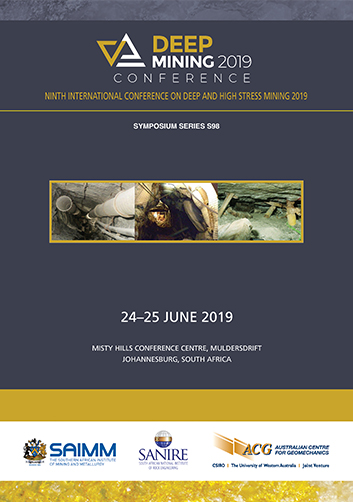Artificial intelligence and big data analytics in mining geomechanics

|
Authors: McGaughey, J |
DOI https://doi.org/10.36487/ACG_rep/1952_04_McGaughey
Cite As:
McGaughey, J 2019, 'Artificial intelligence and big data analytics in mining geomechanics', in W Joughin (ed.), Deep Mining 2019: Proceedings of the Ninth International Conference on Deep and High Stress Mining, The Southern African Institute of Mining and Metallurgy, Johannesburg, pp. 45-54, https://doi.org/10.36487/ACG_rep/1952_04_McGaughey
Abstract:
Mining geomechanics presents specific challenges to application of the closely-related methods of Artificial Intelligence (AI), big data, predictive analytics, and machine learning. This is because successful use of these techniques in geotechnical engineering requires four-dimensional (x, y, z, t) data integration as a pre-requisite, and 4D data integration is a fundamentally difficult problem. This paper describes a process and software framework that solves the pre-requisite 4D data integration problem, setting the stage for routine application of AI or machine learning methods. The workflow and software system brings together structured and unstructured data and interpretation from drillhole data to all types of geological, geophysical, rock property, geotechnical, mine production, fixed-plant, mobile equipment, and mine geometry data, to provide a data fusion capability specifically aimed at applying machine learning to rock engineering problems. The system does this by maintaining 3D earth model and 4D mine model geometrical data structures, upon which multiple data sets are projected, interpolated, upscaled, downscaled, or otherwise processed appropriately for each data type so that the variables of importance for each problem can be co-located in space and time, a requirement for the application of any analytics algorithm. Documents and files can be stored, managed, and linked to data and interpretation to provide relevant metadata and contextual links, providing the platform required for AI solutions. The system rationale and structure are described with reference to specific AI challenges in rock engineering.
References:
Marcus, G. (2017). Artificial Intelligence is Stuck. Here’s How to Move it Forward. New York Times, July 29, 2017.
McGaughey, WJ, Laflèche, V, Howlett, C, Sydor, JL, Campos, D, Purchase, J & Huynh, S. (2017). 'Automated, real-time geohazard assessment in deep underground mines', in J Wesseloo (ed.), Proceedings of the Eighth International Conference on Deep and High Stress Mining, Australian Centre for Geomechanics, Perth, pp. 521-528.
McGaughey, W.J. (2019). 'Data-driven geotechnical hazard assessment: practice and pitfalls', in J Wesseloo (ed.), Proceedings of the First International Conference on Mining Geomechanical Risk, Australian Centre for Geomechanics, Perth, pp. 219-232.
© Copyright 2025, Australian Centre for Geomechanics (ACG), The University of Western Australia. All rights reserved.
View copyright/legal information
Please direct any queries or error reports to repository-acg@uwa.edu.au
View copyright/legal information
Please direct any queries or error reports to repository-acg@uwa.edu.au